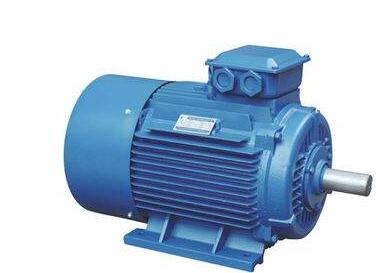
Previously, the editor has introduced in detail the daily maintenance of high-efficiency and energy-saving motors. It can be seen that the daily maintenance work of this motor includes: , checking the insulation safety, secondly, checking the stability of each fixing screw, and regularly checking its carbon brushes. . So what are the advantages of high-efficiency and energy-saving motors dedicated to textiles? Please see the detailed introduction below!
Nowadays, the electricity consumption of electric motors in various countries around the world accounts for a large proportion of the total electricity consumption in the country. According to relevant information, the electricity consumption of electric motors in our country has accounted for more than 60% of the total electricity consumption in society. It can be seen that Using high-efficiency motors is a very effective way to save energy and reduce costs. In particular, the high-efficiency and energy-saving motors dedicated to textiles can work for more than 7,000 hours throughout the year, and their energy saving is even more important.
Overseas, countries such as the United States, Canada, Mexico, and the European Union have formulated energy efficiency standards for electric motors. With the further development of my country's industry, energy is becoming increasingly tense. As early as August 1, 2002, my country has implemented the standard GB18613-2002 of "Energy Efficiency Limit Values and Energy Saving Evaluation Values of Small and Medium-sized Three-Phase Asynchronous Motors". Currently, the standard has been revised to the GB 18613-2006 version.
The current situation and advantages of high-efficiency and energy-saving motors dedicated to textiles:
Textile equipment has been running for a long time, working for more than 20 hours a day on average, and consumes huge amounts of electricity. In the current environment of energy conservation and emission reduction, the promotion and use of high-efficiency energy-saving motors is urgent.
At present, domestic textile-specific high-efficiency and energy-saving motors mainly include FW series, JFO2 series, JFO3 series, and high-efficiency motors for textiles FX series and FXD series. Among them, the FX series and FXD series are truly energy-saving and efficient. The efficiency index of this series is 3% higher on average than the JFO3 series, more than 5% higher than the JFO2 series on average, and 0.5~ higher than the YX series of general-purpose high-efficiency motors developed by the Machinery Department. 1%, not only can it reach the advanced level of foreign countries, but some even surpass them.
In recent years, with the improvement of permanent magnet material performance, price reduction and the development of modern motor technology, permanent magnet high-efficiency motors with high efficiency and high power factor have also been greatly developed. Because of their high efficiency and high power factor, It has good control performance and has recently developed rapidly in the textile market.
Compared with asynchronous motors, high-efficiency and energy-saving motors dedicated to textiles do not require reactive excitation current to generate magnetic fields, which can significantly improve their power factor and reduce the loss between stator current and stator resistance; during stable operation, There is also no rotor resistance loss; in turn, wind friction losses can be reduced due to reduced total losses, thereby improving its efficiency. Compared with ordinary electric excitation synchronous motors, there is no need for an excitation winding and a DC excitation power supply to generate a magnetic field. This also eliminates the problem-prone collector rings and brush devices, becoming a brushless motor, which is both reliable and reliable. Improved efficiency.
The use of high-efficiency and energy-saving motors not only responds to the country's call for energy conservation and emission reduction, but also greatly helps enterprises reduce costs and increase competitiveness. At present, the textile industry has entered a period of slow development. The selection of high-efficiency and energy-saving motors is a once and for all solution and an effective measure to improve the competitiveness of enterprises.



















